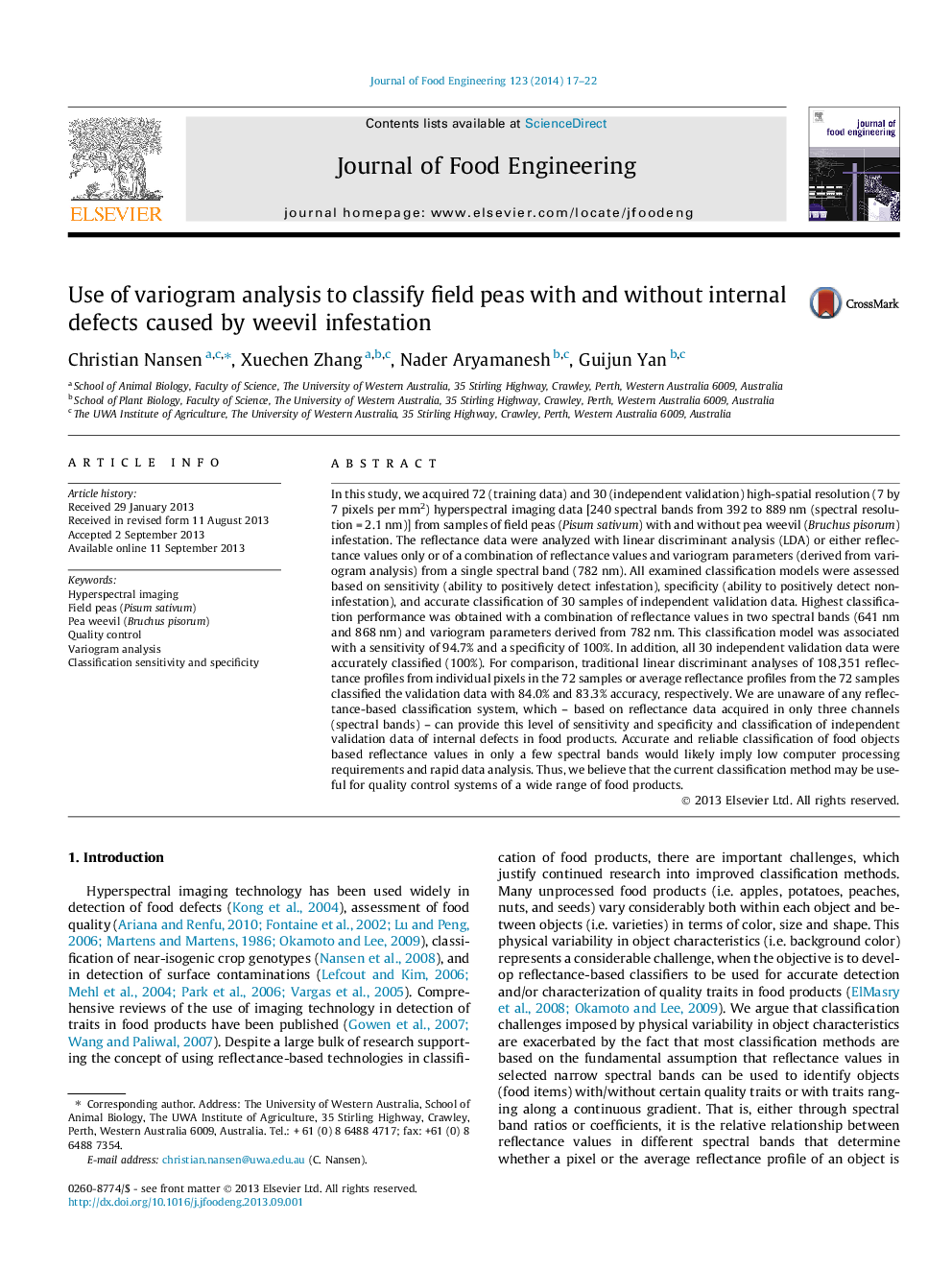| Article ID | Journal | Published Year | Pages | File Type |
|---|---|---|---|---|
| 223204 | Journal of Food Engineering | 2014 | 6 Pages |
•We acquired hyperspectral data of field peas with/without weevil infestation.•Field peas varied markedly in colors ranging from golden to dark brown.•There was a consistent “darkening-effect” of weevil infestation in all pea varieties.•Variogram analysis of reflectance data in single spectral bands was deployed.•Independent validation data were classified with high (>95%) accuracy.
In this study, we acquired 72 (training data) and 30 (independent validation) high-spatial resolution (7 by 7 pixels per mm2) hyperspectral imaging data [240 spectral bands from 392 to 889 nm (spectral resolution = 2.1 nm)] from samples of field peas (Pisum sativum) with and without pea weevil (Bruchus pisorum) infestation. The reflectance data were analyzed with linear discriminant analysis (LDA) or either reflectance values only or of a combination of reflectance values and variogram parameters (derived from variogram analysis) from a single spectral band (782 nm). All examined classification models were assessed based on sensitivity (ability to positively detect infestation), specificity (ability to positively detect non-infestation), and accurate classification of 30 samples of independent validation data. Highest classification performance was obtained with a combination of reflectance values in two spectral bands (641 nm and 868 nm) and variogram parameters derived from 782 nm. This classification model was associated with a sensitivity of 94.7% and a specificity of 100%. In addition, all 30 independent validation data were accurately classified (100%). For comparison, traditional linear discriminant analyses of 108,351 reflectance profiles from individual pixels in the 72 samples or average reflectance profiles from the 72 samples classified the validation data with 84.0% and 83.3% accuracy, respectively. We are unaware of any reflectance-based classification system, which – based on reflectance data acquired in only three channels (spectral bands) – can provide this level of sensitivity and specificity and classification of independent validation data of internal defects in food products. Accurate and reliable classification of food objects based reflectance values in only a few spectral bands would likely imply low computer processing requirements and rapid data analysis. Thus, we believe that the current classification method may be useful for quality control systems of a wide range of food products.
